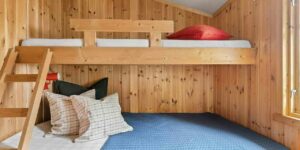A steam room is a small space that’s great for relaxation. While a lot of people only get to enjoy the steam room at the spa, you can also build this at home.
So, how do you do it?
Choosing Space: Existing Shower or Building a New One?
First, pick where you’ll build the steam room.
The easiest and cheapest way to have a steam room in your home is to use an existing shower enclosure. This space already has waterproofed walls and floors, proper drainage, and will only need a few tweaks.
Another option would be to build a new room which should have a lower ceiling and smaller space than your shower. This could be a nicer yet more expensive option.
Choose Your Materials
Next, choose your materials.
A steam room has waterproof walls, floors, and ceilings or it will be damaged quickly. Ceramic tiles, bricks, and stone are perfect for a steam room but wood will also make a beautiful space.
Just make sure to liberally coat the wood with waterproofing sealants and regularly paint over the surface so the wood won’t rot. You can also pick wood such as cedar that’s more resistant to heat and warping.

One great hack is to use ceramic tiles with a wood design so the steam room has a woodsy sauna theme, but with water-resistant material.
Build Your Steam Room
Then, you’ll have to decide whether you’ll DIY or ask for professional help. No matter what you choose, you need to buy a steam generator.
The steam generator should be installed outside the steam room, but near enough so that the steam doesn’t have to travel far in the vents. It’s a good idea to have a separate breaker for your steam generator.
To conserve heat, it’s best to keep the ceiling at a low height of 7ft. Calculate the room’s area so you can choose the right steam generator.
A 7kW steam generator ($1,500 to $1,700) can generate heat for a room with 100-250 cubic feet of space, while a 15kW one ($2,500 to $3,000) can handle a room that’s 550-675 cubic feet.
Build the room and finish with waterproofed materials. It’s also a good idea to seal areas such as cracks where the steam might escape. Noted: don’t install a window in the steam room.
It’s also a good idea to install a room thermometer to monitor the temperature inside. Install the door and complete the finishing touches.
Although it should be completely waterproofed, ensure that there is a small gap left at the door to let in air, notably at the bottom. Make use of a vapor barrier to make it complete, while lastly make sure that a steam generator is properly installed, and this is only done after carefully checking for leakages.
Steam Room at Home Cost
Obviously, the cost will vary depending on the steam generator you pick, the size of the room, and the materials you use.
The steam generator can cost between $1,500 and $3,000. The average building cost is between $22 and $65 per square foot for regular materials while can go as high as $44 to $130 per square foot for custom-built materials, according to Home Advisor.
On average, converting an existing shower into a steam room can cost less than $3,000 if you’ll only buy a small steam generator. Building one from scratch (DIY) can go as high as $4,000 to $6,000.
A steam room built by a professional can cost $5,000 to $10,000 or more, according to The Spruce.
For additional tips on building a steam room at home, consider the following;
- Ventilation: Proper ventilation is crucial to prevent mold and mildew growth. Install a vent fan to help control humidity and air quality.
- Lighting: Opt for waterproof, vapor-proof lights specifically designed for steam rooms to enhance safety and ambiance.
- Seating: Choose materials resistant to moisture and heat for your seating, such as teak or cedar, and ensure the design allows for comfortable, relaxed seating.
- Sound System: Consider installing a waterproof sound system to enjoy music or meditation tracks for a more relaxing experience.
- Aromatherapy: Integrate an aromatherapy system to dispense essential oils into the steam for a spa-like atmosphere.
- Maintenance: Regularly clean the steam room to prevent bacteria and mold buildup. Use gentle, non-abrasive cleaners that are safe for the materials in your steam room.
Remember, while adding these features, maintain all safety and building codes specific to your area.
Enjoy Your Steam Room
Now that you’re done, turn on the steam generator to start enjoying your steam room.





